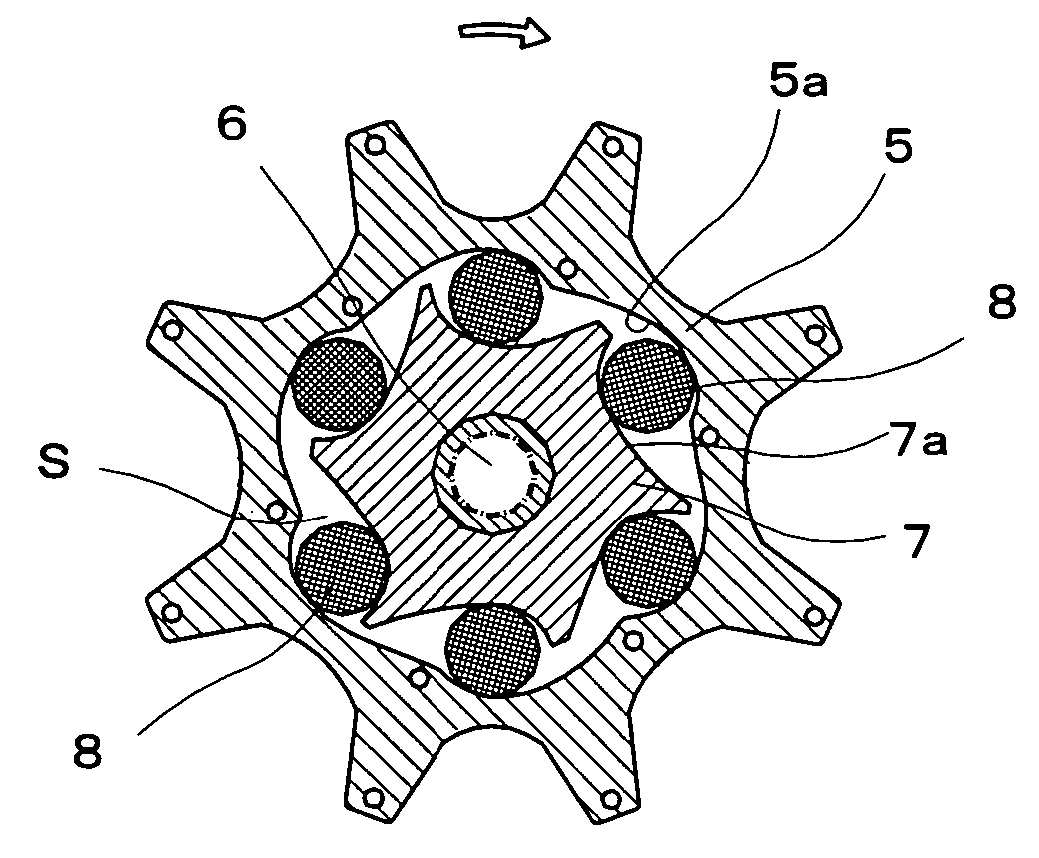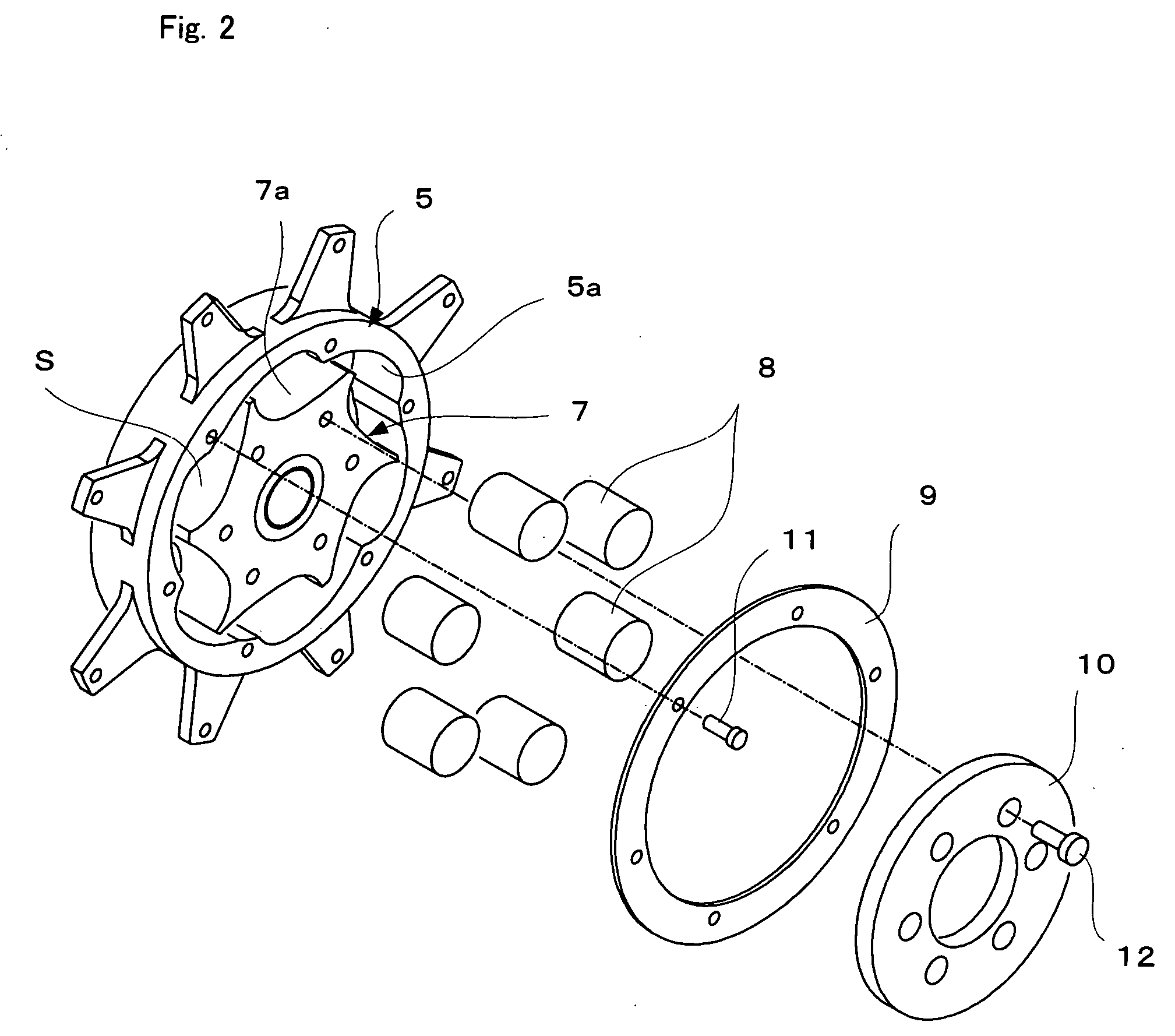Marine elastic coupling
a technology of elastic coupling and elastic coupling, which is applied in the direction of yielding coupling, shafts, bearings, etc., can solve the problems of increasing torsional rigidity not high enough to sufficiently reduce the resonance phenomena in the propeller transmission system during high-speed travel, and the effect of absorbing torque variation and low torsional rigidity
- Summary
- Abstract
- Description
- Claims
- Application Information
AI Technical Summary
Benefits of technology
Problems solved by technology
Method used
Image
Examples
Embodiment Construction
[0044]FIG. 1 is a vertical cross section showing the principal part of a marine elastic coupling; FIG. 2 is an exploded perspective view showing the elastic coupling portion; and FIG. 3 is a cross section. showing the elastic coupling portion.
[0045] Referring to FIG. 1, a flywheel 2 is mounted on a drive shaft 1 which is coupled to an engine outside the figure, and an elastic coupling 3 is arranged concentrically with a central portion of the flywheel 2. The elastic coupling 3 is connected to an input shaft 6 of a marine gear 4. Note that the propeller shaft and the propeller are omitted in FIG. 1.
[0046] The marine gear 4 comprises a casing 13; the input shaft 6 inserted into an opening at one end of the casing 13; a forward housing gear 14 secured to the input shaft 6; a forward pinion gear 15 rotatably fitted over the input shaft 6; a friction clutch 16 disposed between the forward housing gear 14 and the forward pinion gear 15; an output shaft 17 projecting through an opening a...
PUM
 Login to View More
Login to View More Abstract
Description
Claims
Application Information
 Login to View More
Login to View More - R&D
- Intellectual Property
- Life Sciences
- Materials
- Tech Scout
- Unparalleled Data Quality
- Higher Quality Content
- 60% Fewer Hallucinations
Browse by: Latest US Patents, China's latest patents, Technical Efficacy Thesaurus, Application Domain, Technology Topic, Popular Technical Reports.
© 2025 PatSnap. All rights reserved.Legal|Privacy policy|Modern Slavery Act Transparency Statement|Sitemap|About US| Contact US: help@patsnap.com



